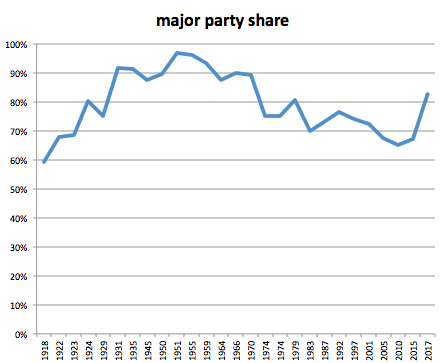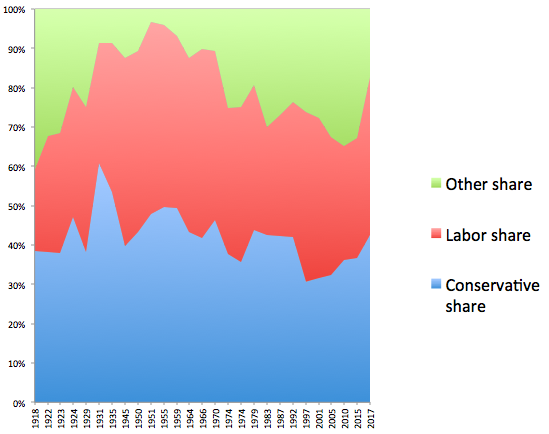- Facebook48
- Total 48
A May 2016 article in the Financial Times was headlined, “British politics has broken out of the two-party system.” The lead explains:
Politics has fragmented. London’s choice of Sadiq Khan as mayor grabbed the headlines — and rightly so. But the local and regional elections across the UK carried a broader message. British politics has broken out of the familiar framework of the two-party system. As in much of the rest of Europe the old rules are being discarded.
Provisionally, it seems the 2017 election results tell the opposite story. Here’s a hypothesis about what happened in Britain last week:
- Elections based on single-member districts tend to produce two-party systems, because votes for parties other than the top two are seen as “wasted.” The exceptions occur when regional parties are able to win majorities in their home areas.
- Given two parties, over time, people tend to split their votes about 50/50. If one party has a big advantage, that’s a disequilibrium; soon some demographic or identify groups migrate to the other party to even it out. Voters use party labels as heuristics and are not mainly affected by the specific policies or personalities on offer in a given campaign. That each party will get 50% of the vote is a pretty good guess.
- Britain avoided a two-party system for parts of the 20th century, but the 2017 election saw the duopoly return. That’s why, despite May’s poor performance and Corbyn’s arguably radical views, each got closer to 50% of the vote than their predecessors had for decades.

This second graph breaks it down by party:

Sources: The Guardian for the 2017 vote tallies so far. The UK Electoral Commission for historic data. Analysis is my own.